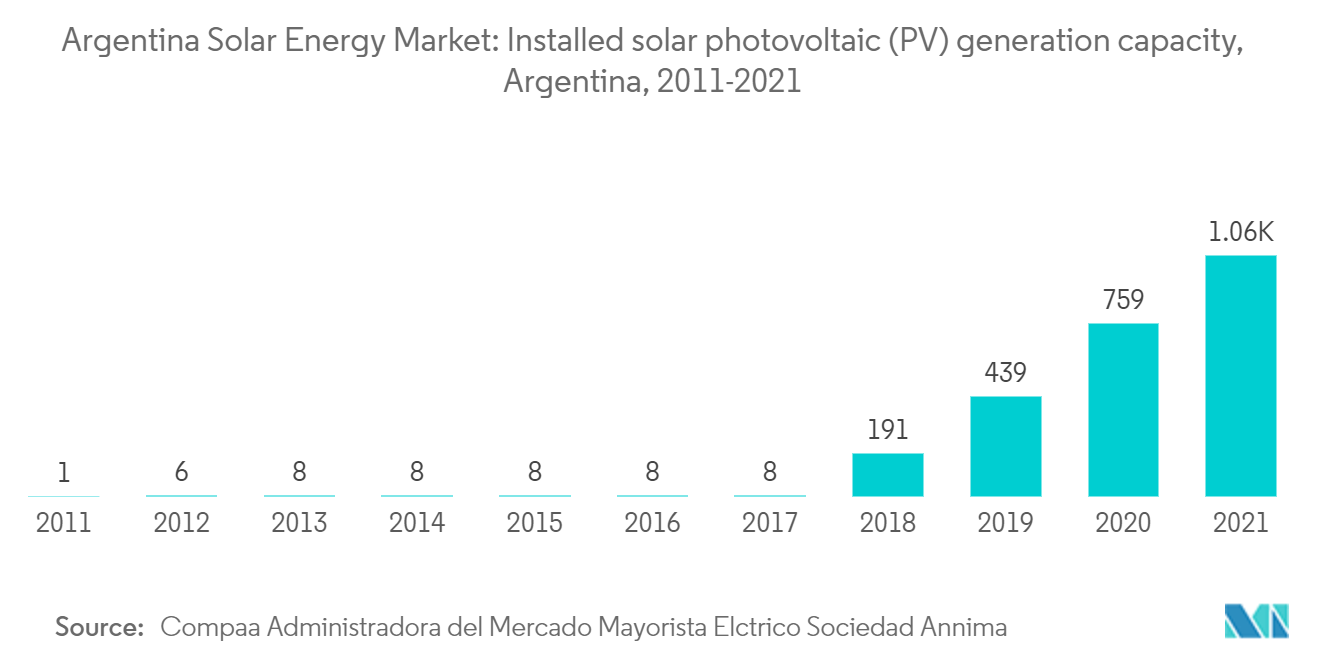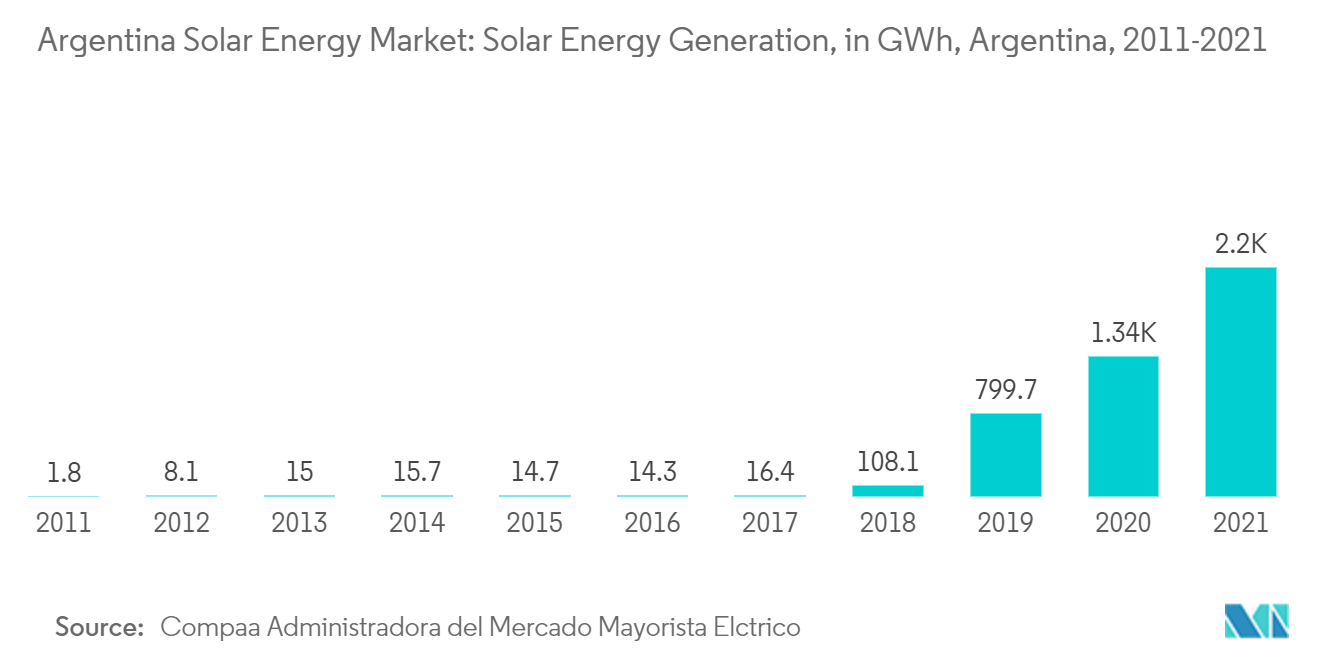Market Trends of Argentina Solar Energy Industry
This section covers the major market trends shaping the Argentina Solar Energy Market according to our research experts:
Solar Photovoltaic (PV) is Expected to be the Largest Segment
- The cost of solar power has declined in recent years, majorly due to initiatives taken on an international level by governments and private organizations to promote research and development in this field. This cost reduction has made solar technology, especially solar PV technology, more accessible in Argentina, with a total solar PV installed capacity of 1,060 MW in 2021.
- The growing electricity demand is also a major factor driving the market's growth. Concerns regarding the high carbon footprint of conventional power plants are also expected to aid in increasing the demand for solar PV to meet the growing power demand in Argentina.
- More than half of Argentina's territory receives annual average sunlight over 3.5 kWh/m2, making solar PV a technically viable option to match the higher electricity demand. In 2021, solar power accounted for more than 12.7% of total renewable power in Argentina, with the majority being generated through solar PV.
- Under the RenovAr Program, the country plans to add 10,000 MW of renewable power to the grid by 2025. To realize this target, 58 potential solar projects, with a combined capacity of 2,834 MW, were submitted in the first renewable energy tender, further driving the solar PV market.
- Argentina's solar energy market is relatively underdeveloped. However, due to the declining costs of solar, the Argentinian government is investing small amounts in solar energy, which is expected to result in gradual growth in the sector. For instance, in February 2022, the state-owned oil and gas utility firm, YPF, started constructing the 300 MW Parque Solar Zonda project.
- The country has several solar PV projects in the pipeline and planning stages, which are expected to significantly boost the growth of the solar energy market in Argentina.

Government Policies for Solar PV Development to Drive the Market
- So far, the RenovAr program has attracted strong investor interest, leading to significant oversubscription of the bidding rounds. Bidders are competing to sign 20-year power purchase agreements (PPAs) with CAMMESA (Compañía Administradora del Mercado Mayorista Eléctrico), which acts as an off-taker on behalf of distribution utilities and large, wholesale market users.
- With solar energy generation in Argentina increasing by more than 100-fold in just five years, the country generated approximately 2.19 TWh of solar energy in 2021, up from 16.4 GWh in 2017, representing a 63% increase in solar energy production in Argentina.
- The country's solar sector has been growing at a moderate pace, boosted by government policies such as the Public-Privateate Partnership (PPP) law and efforts to regulate and encourage private investments in the critical sectors of the country's economy. More than 30 solar projects, primarily across major infrastructure and social sectors, including energy and transport projects, are expected to be implemented under the PPP model.
- Due to such developments, the country's solar energy market is expected to be dominated by large-scale utility solar projects. In December 2021, Argentine power producer Genneia SA started the construction of the 80 MW Sierras de Ullum solar farm. The USD 60-million project is expected to be commissioned by the end of 2022.
- Similarly, in February 2022, YPF Luz started the construction of the 100-MW Zonda solar farm project in San Juan. After the completion of the first phase worth USD 93 million, the company expects to upgrade the farm's capacity to 300 MW in three 100 MW stages. These large-scale utility projects are expected to drive the solar energy market in Argentina during the forecast period.
- Such developments in solar PV installations in the country and the increasing adoption of renewble energy are likely to drive the growth of the solar energy market in Argentina in the coming years.


